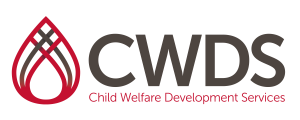CWDS Curriculum
Grief and Loss in Child Welfare
Level: Advanced Practice-Lineworker
Credits: 6
Intended Audience: New and current child welfare workers
Intended Objectives:
- To discuss the impact of separation from family on children’s development and emotional well being.
- To identify the psychological tasks and attempts at mastery for children dealing with grief and loss.
- To outline the common behavior patterns of the grieving process.
- To identify the long term consequences of excessive emotional distress for children separated from their families.
- To present how workers and other caregivers can help children grieve.
- To examine specific strategies to help clients and workers find healthy relief from feelings of loss.
Topics Include:
- Issues of loss and separation in child welfare
- General emotional responses of children to separation
- Long-term consequences of excessive emotional distress for children in placement
- Helping caregivers to help children grieve
- Specific intervention techniques to deal with grief
- Preventing and/or reducing compassion fatigue
- Developing a personal action plan
CalSWEC Competencies Addressed:
1.1 Student demonstrates sensitivity to clients’ differences in culture, ethnicity, and sexual orientation.
3.2 Student demonstrates understanding of the potential effects of poverty, racism, sexism, homophobia, violence, and other forms of oppression on human behavior.
2.16 Student understands the principles of permanency planning and the negative effects that inconsistent and impermanent living arrangements have on children.
2.19 Student works collaboratively with foster families and kin networks, involving them in assessment and planning and supporting them in coping with special stresses and difficulties.
Posted In:Mental Health & Behavioral Health
Permanency: Reunification, Foster Care and Adoptions
Placement



